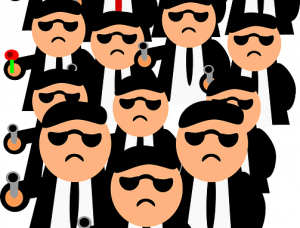The Seattle crime family, or the Rufalo crime family is an Italian-American Mafia (La Cosa Nostra) organized crime family in Seattle, Washington and Tacoma. The family is on the verge of extinction, with only about 5-10 members left. Boss: Accursio 'Andrew' Rufalo (1949 - 1977) (died of natural causes), Carl 'Clark' Cutino (1977 - 1985) (retired), George 'Johnny' Respino (1985 - 1993.
- Italian police this week made a significant bust in the ‘Ndrangheta gambling network, the richest and most powerful mafia crime syndicate in the world.
- The investigation, into links between the mafia and gambling companies, alleges that SKS365 — Italy's second-largest online sports betting operator as of August with 13.1% of the market — operated illegal gambling venues bankrolled by the Martiradonna mafia crime family. The company secured licences for the majority of its internet.
- Hughes went forth to purchase over fifteen gambling resorts, expelling Mafia from them. By the end of the 1970s, Hughes suffered huge losses instead of the huge profits he had craved for and thus left the casino business. The Mafia made a comeback to the Las Vegas casinos, albeit for a short time.
- The investigation began in April 2003 as a probe into gambling at Caffe Roma, a small Italian dessert shop on Park Avenue in East Rutherford, where authorities said gamblers could place bets as.
- The Italian Mafia in the U.S. is organized into the Five Families, governed by The Commission.
- The Bonanno family was infiltrated by an FBI agent, which inspired the movie Donnie Brasco.
- John Gotti was the leader of the Gambino family in the 1980s and the 1990s.
The Italian Crime Families in the United States were a part of what we refer to as the American Mafia. Other terms used to describe these members of the Italian-American criminal society are 'the Mob' or Cosa Nostra (Italian for 'our thing'). The organization was started as a fraction of the Sicilian mafia. However, with time it began to encompass other gangsters of Italian-American origins and certain other Italian criminal organizations that were not necessarily from Sicily.
The Mafia in the U.S. originated in Italian immigrant areas in East Harlem, Brooklyn or the Lower East Side in New York during the late 19th and early 20th century. Since large waves of Italian Immigration were happening at the time, the Mafia spread to some cities outside New York as well, like Chicago and New Orleans. American Mafia is organized into families. A family is the most important unit of the Mafia, and it is the name used for various organizations that make up the Mafia. The members of a family are not necessarily related by blood.
The Five Families
Throughout the history of the Italian-American Mafia, the largest families were the ones organized by Salvatore Maranzano in 1931 in New York. He organized the families after he was victorious in a mob war for the streets of New York called the Castellammarese War. He reorganized the entirety of the gangs that were active in New York City and created the five families, each with their territory and a power structure. Those were the Maranzano, Profaci, Mangano, Luciano, and Gagliano, families. However, in time they changed names, and they are most well known as the Bonnano, Colombo, Gambino, Genovese, and Lucchese families.
These are considered to be the most powerful and impactful families in the history of organized crime in the United States. At first, Maranzano envisioned the organization to function in a way where the heads of every family would answer to him because he was considering himself to be the 'boss of all bosses.' However, he was assassinated, and the role he intended for himself was taken over by the Commission. The Commission served as a governing board that would oversee the activity of the Mafia members all over the United States. In time, other crime families managed to come close to the size and power of the Five Families, but they remain at the top, as the most powerful in history.
5. The Lucchese Family
Italian Mafia In America
The Lucchese family originated in the 1920s and was known as the Gagliano family at the start. Their first boss was Gaetano Reina, but Tommy Gagliano replaced him after he was murdered. They were known as the most peaceful family and remained low key with their operations. They mostly operated through the Bronx, Manhattan, and New Jersey.
After Tommy Lucchese took over the reins of the family, they changed their name and became one of the most notorious families in The Commission.
4. The Genovese Family
The Genovese crime family was tied with a large number of smaller families outside of New York. They were initially called the Luciano family and were founded by Lucky Luciano, a famous gangster. In 1957 it was renamed to the Genovese family by its new boss Vito Genovese. They held control of the West Side of Manhattan and were run for years by Vincent Gigante.
Nicknamed 'The Chin,' Vincent would often roam the streets unshaven and acted like crazy, so people would not suspect him of being linked to the Mafia and prosecute him. Today they remain the most organized and powerful crime family in the U.S.
3. The Gambino Family

Previously known as the Mangano crime family, this group changed a large number of bosses in the first half of the 20th century. It was named after Carlo Gambino in 1963 after the public started paying more attention to the workings of the criminal underworld. This group operated all over the U.S., and its activities include, but were not limited to; extortion, money laundering, prostitution, gambling, racketeering, and labor and construction.
They were the most powerful crime family for a certain period starting with 1957 when Carlo Gambino assassinated the previous leader Albert Anastasia and took over the family. Famous gangster John Gotti led this family through the 1980s and the 1990s.
2. The Colombo Family
Italian Mafia Gambling
This crime family was previously known as the Profaci family. It is the youngest of the Five Families, being recognized as one of the families during the time Lucky Luciano was running the American Mafia. It started as a bootlegging gang that was formed in 1928 by Joseph Profaci. He ruled the family until the 1950s, and during his rule, there were a lot of internal struggles in the family.
It almost got destroyed, but in the 1960s, Joseph Colombo managed to unite the family again. There was another family war, and the family finally found a long-lasting peace under the rule of Carmine Persico, starting with 1975.
1. The Bonanno Family

The Bonanno crime family, known initially as the Maranzano family, was considered to be one of the most powerful in the entire United States. It gained its notoriety during the leadership of Joseph Bonanno, from the 1930s to the 1960s. Bonanno was so powerful he even attempted to overtake the Commission, but he never managed to do so. The Bonanno family is famous for many stories, one of which was the source for a famous Hollywood movie called 'Donnie Brasco.'
During the late 1970s, an FBI agent calling himself Donnie Brasco infiltrated the crime family, and this was the reason the Bonanno family was kicked out of the Commission until the 1990s. The Bonanno Family members were known for their brutality.
Gambling is a vital business for the Mafia. They've earned lots of money from playing card games and betting on virtually every sport. The Mafia ran numerous illicit and deluxe gambling joints all over the United States. The Mafia Bosses had police officers and other law enforcers on their payroll and thus their gambling maneuvers went down without interruption by state agencies. However, the 1931 legalization of gambling in the state of Nevada transformed the casino and gambling industry in the country. After the legalization of gambling in the state, there was little activity as only a few people cared, including military men from adjacent camps and some local cowboys.
The humble beginnings of a desert town
Positioned in the interior of the expansive Mojave Desert in Nevada, Las Vegas was a dusty town that seemed ages away from its now revered nightlife, casinos that operate round the clock as well as numerous other modern entertainment options. During the early 1940s, the town was essentially made up of a small number of filling stations, some slot machine shops and a few outlets dishing out junk food. Living or working in Las Vegas was not pleasant. The Mafia only caught onto the humongous money mining capability of the town after the end of World War II.
Mafiosi Bugsy Siegel
How the Fidel Castro Revolution impacted on Las Vegas
The famed American crime boss Alphonse Gabriel Al Capone, aka Scarface, aka Big Boy, aka Public Enemy No. 1, had a great interest in Las Vegas, although he wasn't able to accomplish his agenda of transforming the town into a casino harbor for holidaymakers and gambling enthusiasts. As such, Las Vegas stayed without the Mafia until its potential was realized by

Previously known as the Mangano crime family, this group changed a large number of bosses in the first half of the 20th century. It was named after Carlo Gambino in 1963 after the public started paying more attention to the workings of the criminal underworld. This group operated all over the U.S., and its activities include, but were not limited to; extortion, money laundering, prostitution, gambling, racketeering, and labor and construction.
They were the most powerful crime family for a certain period starting with 1957 when Carlo Gambino assassinated the previous leader Albert Anastasia and took over the family. Famous gangster John Gotti led this family through the 1980s and the 1990s.
2. The Colombo Family
Italian Mafia Gambling
This crime family was previously known as the Profaci family. It is the youngest of the Five Families, being recognized as one of the families during the time Lucky Luciano was running the American Mafia. It started as a bootlegging gang that was formed in 1928 by Joseph Profaci. He ruled the family until the 1950s, and during his rule, there were a lot of internal struggles in the family.
It almost got destroyed, but in the 1960s, Joseph Colombo managed to unite the family again. There was another family war, and the family finally found a long-lasting peace under the rule of Carmine Persico, starting with 1975.
1. The Bonanno Family
The Bonanno crime family, known initially as the Maranzano family, was considered to be one of the most powerful in the entire United States. It gained its notoriety during the leadership of Joseph Bonanno, from the 1930s to the 1960s. Bonanno was so powerful he even attempted to overtake the Commission, but he never managed to do so. The Bonanno family is famous for many stories, one of which was the source for a famous Hollywood movie called 'Donnie Brasco.'
During the late 1970s, an FBI agent calling himself Donnie Brasco infiltrated the crime family, and this was the reason the Bonanno family was kicked out of the Commission until the 1990s. The Bonanno Family members were known for their brutality.
Gambling is a vital business for the Mafia. They've earned lots of money from playing card games and betting on virtually every sport. The Mafia ran numerous illicit and deluxe gambling joints all over the United States. The Mafia Bosses had police officers and other law enforcers on their payroll and thus their gambling maneuvers went down without interruption by state agencies. However, the 1931 legalization of gambling in the state of Nevada transformed the casino and gambling industry in the country. After the legalization of gambling in the state, there was little activity as only a few people cared, including military men from adjacent camps and some local cowboys.
The humble beginnings of a desert town
Positioned in the interior of the expansive Mojave Desert in Nevada, Las Vegas was a dusty town that seemed ages away from its now revered nightlife, casinos that operate round the clock as well as numerous other modern entertainment options. During the early 1940s, the town was essentially made up of a small number of filling stations, some slot machine shops and a few outlets dishing out junk food. Living or working in Las Vegas was not pleasant. The Mafia only caught onto the humongous money mining capability of the town after the end of World War II.
Mafiosi Bugsy Siegel
How the Fidel Castro Revolution impacted on Las Vegas
The famed American crime boss Alphonse Gabriel Al Capone, aka Scarface, aka Big Boy, aka Public Enemy No. 1, had a great interest in Las Vegas, although he wasn't able to accomplish his agenda of transforming the town into a casino harbor for holidaymakers and gambling enthusiasts. As such, Las Vegas stayed without the Mafia until its potential was realized by
. The timing of the coming of these Mafiosi couldn't be any better. Prior to the development of Las Vegas by these Mafiosi, American holidaymakers searching for a splendid gaming time had to travel to Cuba. The crooked Batista administration warmly received gangsters in Cuba; there were countless casinos and the earnings were great. About ten years passed after the first Las Vegas casino was opened and Cuba was swept with the Fidel Castro Revolution. Consequently, there was no choice for legitimate gambling other than heading to Las Vegas.
The Flamingo and other resorts
The moneyed Mafia launched The Flamingo, the first gaming resort in Las Vegas on Boxing Day of 1946, courtesy of Siegel's superb organizational skills and creativity. The opening of several other resorts backed by Mafia followed suit. Gaming in Las Vegas became an exceedingly lucrative and lawful commercial activity for the Mafia. The previously dull dusty desert town was duly transformed into the ritzy Las Vegas Strip.
Before the mid-20th century, the New York City Mafia Families and Al Capone's Chicago Outfit had launched businesses in Las Vegas. The Outfit operated three main casinos, specifically the Riviera, the Stardust and the Desert Inn. The Outfit opened other casinos in the 1960s including the Golden Nugget, the Fremont, and the Hacienda. Travelers from across the country and the rest of the world flocked Las Vegas to at least have a taste of the city's unrivaled gaming, vibrant nightlife and world's best entertainment.
Sharing the spoils
Italian Mafia Gambling Rules
Many Mafia Families were coming up with gambling resorts as the existing businesses started being concerned about the shrinking of profits occasioned by increased competition. The different Mafia families from across the country struck a deal ensuring that each one would receive an intertwined profit share from the other's resort. It was almost impossible to identify which resort was owned by who. Every Mafia Family received a share of the spoils; mind you it was a colossal share.
The fall of the Mafia
Enter the antisocial and self-centered magnate Howard Hughes in the 1960s, and businesses of Las Vegas Mafia started falling. Hughes rooted for and achieved the legislation of a Nevada law that banned conglomerates from having interests in casinos and resorts. Hughes went forth to purchase over fifteen gambling resorts, expelling Mafia from them. By the end of the 1970s, Hughes suffered huge losses instead of the huge profits he had craved for and thus left the casino business.
The Mafia made a comeback to the Las Vegas casinos, albeit for a short time. In the 1980s, the FBI instigated far-reaching assaults on the Las Vegas welfares owned by the Mafia. Casinos and resorts controlled by Mafia were taken by the FBI and vented to legitimate proprietors. The new landlords transformed the city's appearance into a family-friendly vacation destination. The majority of the members of the Mafia were arrested and charged, mostly for tax evasion, and faced the prospect of spending the rest of their lives in jail.
Online casino gaming
Italian Mafia Today
Las Vegas still carries on with its gambling legacy as it's the hub of some of the world's best online casinos that can be played from any corner of the world. Gaming enthusiasts do not need to travel all the way to Las Vegas for gambling; rather, one can gamble and play slot games online and enjoy free spins and other casino bonuses upon registering. It's only a matter of time before online casino becomes fully legal in all states in the US.

